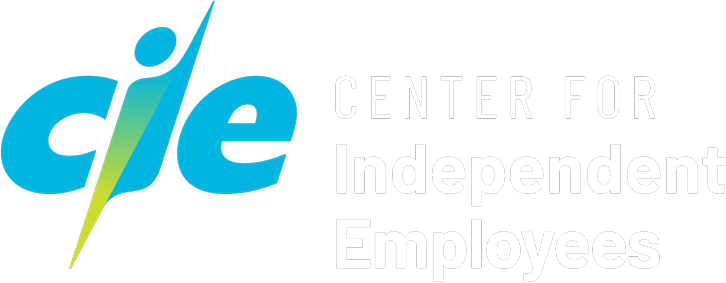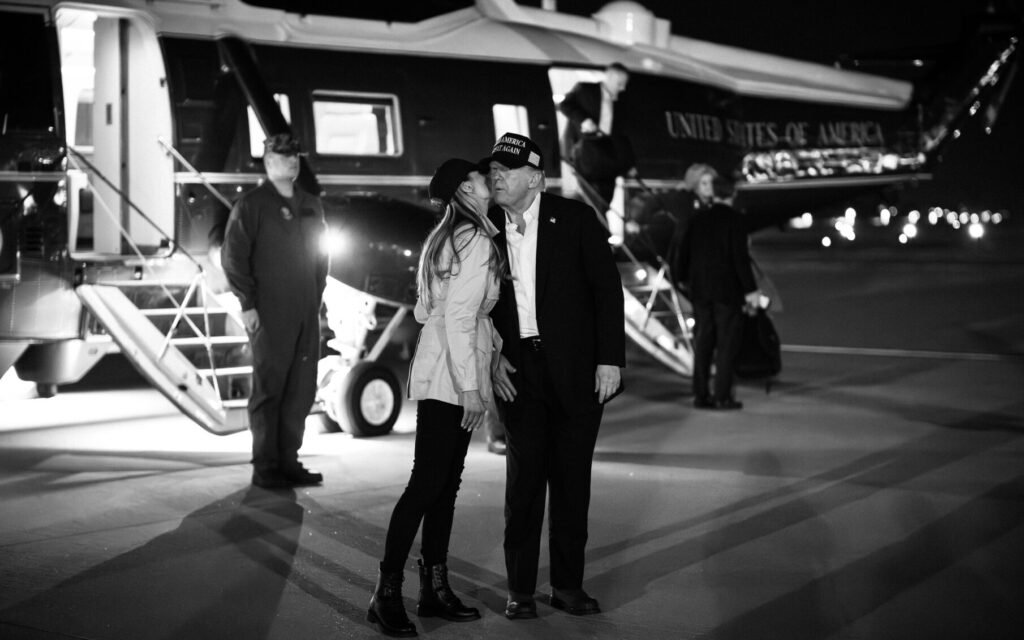When it comes to labor disputes, Trump has a golden opportunity to restore balance
President Donald J. Trump and First Lady Melania Trump arrive on Marine One to board Air Force One at Los Angeles International Airport in Los Angeles, Friday, Jan. 24, 2025. (Official White House Photo by Andrea Hanks)
By: Charles P. Roberts III, General Counsel, Center for Independent Employees
With the new Trump administration taking the reins, nomination fights have been much in the headlines. High-profile, controversial cabinet appointments have dominated the news.
But outside the spotlight, Trump is already halfway to getting his way on another highly consequential confirmation battle: The future makeup of the National Labor Relations Board. How Trump chooses to play the favorable hand dealt him will say much about his presidency and the politics of labor in the coming years.
The NLRB is governed by a five-person board and a general counsel, all of whom the president appoints with Senate confirmation. Under the National Labor Relations Act of 1935, the Board is responsible for supervising elections for union representation and investigating allegations of unfair labor practices by employers.
Among the more than 400 federal agencies that dot the D.C. landscape, the NLRB may be the most bipolar. Unlike many federal agencies that appear immune to changes at the top, the five-member NLRB throughout its history has moved considerably right or left with changes in administration. The NLRB operates almost exclusively through individual case adjudication, rather than formal rulemaking, and as its composition changes, it has for its 90-year existence adopted, reversed, revised and readopted decisions and policies in a fashion that can cause whiplash to employers, unions, employees and attorneys. The Board has earned a reputation for being “pro-labor” or “pro-business,” depending entirely upon the political party in charge, often at the expense of the impact its decisions have on the actual employees whose rights lie at the core of the National Labor Relations Act.
While the interests of employers and unions matter, the core rights established in Section 7 of the Act are not institutional in nature. The Act imposes obligations and restrictions on unions and employers, but it grants employees specific rights, most notably the freedom to choose. Employees have a right to “form, join or assist labor organizations,” and to “bargain collectively through representatives of their own choosing,” but they “also have the right to refrain from any or all such activities.” The Act is agnostic regarding their choice. Just as they may freely choose to unionize, they may seek to oust or replace a union previously selected. Unfortunately, the Board’s historical decisions have all too often placed a thumb on the scale in favor of the institutional interests of employers or unions.
But President Trump has a huge opportunity to change that dynamic.
In December, erstwhile Democrat Senators Joe Manchin and Kyrsten Sinema nuked the plans of President Biden and Senator Charles Schumer to Trump-proof the NLRB. Crossing political lines to join the Republicans, they voted against reappointing the Democrat Lauren McFerran to a new five-year term. As a result, there are two Democrats and one Republican left on the Board, with two spots sitting empty.
As a result, President Trump has the opportunity to remake the Board in 2025. And, if he chooses, he will have an opportunity to do something truly radical – create a Board that is fairly viewed as neither pro-labor nor pro-business, but pro-employee.
Trump built his MAGA campaign on protecting the interests of everyday working Americans, not the interests of the Chamber of Commerce or the AFL-CIO. With only isolated exceptions, the text of the Labor Relations Act is not particularly complex, and there is no plausible reason why interpretations and policies should flip back and forth repeatedly along purely partisan lines or create unnecessary complexities. President Trump has an opportunity to nominate new Board members, as well as a new general counsel, with the promise they will commit broadly to reestablishing the primacy of actual employees. Consistent with the mission of the proposed Department of Government Efficiency (DOGE), this means working to deregulate and simplify the Labor Relations Act to the extent possible. Primarily, however, it means interpreting the Act as it is written, not reimagining it to suit political preferences.
The devil, of course, is in the details. This undertaking will require considerable effort on the part of new and continuing Board members and a new general counsel to identify the many decisions and policies that warrant close scrutiny. It will also require them to set aside traditional party interests and look for common ground that will withstand future changes in administration. To be sure, the Biden-era Board has been highly aggressive, even by historical standards, in its efforts to reimagine the act. Many recent decisions will need to be scrapped immediately as they are patently legislative, rather than interpretative. For example, the anti-employee/anti-democratic Cemex decision imposes a union on employees without a secret ballot vote merely as punishment for an employer’s unfair labor practices. This decision was pro-labor union, not pro-employee.
But the answer is not, as prior Boards often have done, to swing the pendulum in the opposite direction. Instead, the goal should be simplification, elimination of unnecessary rules, regulations and policies, and a focus on the interests of employees. The review process should extend to the entire jurisprudence of the Board. In light of the U.S. Supreme Court’s Loper Bright decision last term, which abandoned judicial deference to ostensibly reasonable agency interpretations of federal statutes, the Board’s history of flipping back and forth on alternative interpretations of the Act appears much less tenable. There should be a single “best”interpretation that will withstand judicial scrutiny.
If President Trump chooses wisely and ensures mission alignment with these objectives, the NLRB can become a pillar of simplicity and consistency amidst changing political winds. Political gamesmanship and manipulative tactics will take a back seat to a culture of principled decision-making. And while the unions may win some and lose some, everyday American employees will be much more consistent winners.
Charles P. Roberts III serves as General Counsel at the Center for Independent Employees, a nonprofit legal defense foundation that provides representation and aid to independent employees opposed to union oppression in their workplaces. He has argued cases before the NLRB and has worked as a traditional labor lawyer for more than 40 years.


